Animation Ideas and Concepts for Beginners: Essential Tips for Success in 2025

Animation is no longer limited to large studios or professionals. In 2025, more people than ever are diving into the world of animation thanks to accessible software, online learning resources, and affordable tools. Whether you’re a student, hobbyist, or aspiring animator, understanding the Basics of Animation for Beginners is essential to get started on the right foot. This comprehensive guide explores Animation Ideas for Beginners, introduces key Beginner Animation Concepts, shares Essential Animation Tips, and breaks down the Best Animation Techniques for Beginners to set you up for creative success. Whether you want to animate simple characters, tell a story, or bring your designs to life, this guide will walk you through the essentials. 1. How to Start Animation: A Beginner’s Perspective If you’ve ever wondered How to Start Animation, you’re not alone. The good news is that animation is more accessible than ever. Here’s how you can begin your journey in animation: ✔ Choose Your Animation Type: Decide whether you want to explore 2D, 3D, stop-motion, or motion graphics. ✔ Pick Beginner-Friendly Tools: Start with intuitive software like Pencil2D, OpenToonz, or Krita. ✔ Learn the Basics: Focus on frame-by-frame animation, keyframes, and timing. ✔ Follow Online Tutorials: Platforms like YouTube and Skillshare offer great beginner courses. ✔ Start Small: Work on short animation loops before jumping into complex projects. Following this path gives you a solid foundation to experiment with Creative Animation Ideas and grow your skills. 2. Beginner Animation Concepts: What You Need to Know Mastering Beginner Animation Concepts is the key to building a successful animation workflow. These core ideas are essential to every animation, regardless of the style or tool you use. Key Concepts: ✔ Timing and Spacing: Determines how fast or slow objects move and how smooth the animation feels. ✔ Squash and Stretch: Adds elasticity and life to characters. ✔ Anticipation: Prepares the audience for the main action, making movement feel natural. ✔ Ease In and Ease Out: Slows down animation at the beginning or end for more realism. ✔ Follow-Through and Overlapping Action: Makes animation more dynamic and fluid. These foundational principles help you create believable motion and are part of the Best Animation Techniques for Beginners. 3. Animation Ideas for Beginners: Creative and Fun Projects Coming up with Animation Ideas for Beginners can be challenging, but the key is to start with simple, achievable goals. Here are a few Creative Animation Ideas to try: ✔ Bouncing Ball Animation: Practice squash, stretch, and timing. ✔ Walk Cycle: A basic but crucial project that teaches character movement. ✔ Animating a Face Emoji: Use simple shapes to express emotions. ✔ Object Transformation: Animate one object morphing into another. ✔ Looping GIFs: Create short, shareable animations for social media. ✔ Simple Dialogue Scenes: Animate a conversation using basic mouth shapes and timing. These projects allow beginners to experiment and apply Essential Animation Tips in a hands-on way. 4. Essential Animation Tips for Beginners Learning animation takes time, but following these Essential Animation Tips can speed up your progress: ✔ Keep It Simple: Don’t try to create a Pixar-level short on your first try. ✔ Use Reference Footage: Study real-life movement to understand natural motion. ✔ Plan Before You Animate: Use storyboards and thumbnails to map out your ideas. ✔ Test Constantly: Play back your animation frequently to catch mistakes early. ✔ Stay Consistent: Use consistent frame rates and sizes for smoother results. ✔ Seek Feedback: Join online animation communities and ask for constructive criticism. Applying these tips ensures your learning curve is steep yet enjoyable. 5. Best Animation Techniques for Beginners in 2025 Here are the Best Animation Techniques for Beginners that are trending in 2025: ✔ Frame-by-Frame Animation: Master traditional animation by drawing each frame. ✔ Cut-Out Animation: Use digital puppets or layers to animate characters easily. ✔ Tweening: Let the software generate frames between two positions for smooth transitions. ✔ Onion Skinning: Helps track the movement of previous frames while animating. ✔ Motion Capture (MoCap): Some beginner tools now include simple motion tracking features. ✔ Lip Syncing: Sync animated characters to voice recordings. These techniques will help you create polished animations even as a beginner. 6. Step-by-Step Animation Guide: From Concept to Creation This Step-by-Step Animation Guide walks you through the basic workflow from idea to finished animation: Step 1: Brainstorm Your Concept ✔ Come up with a short scene or story. ✔ Decide the tone (funny, emotional, educational, etc.). Step 2: Write a Script or Outline ✔ Even for a short project, having a script helps you stay organized. Step 3: Create a Storyboard ✔ Sketch each major scene or action. ✔ Think about camera angles and timing. Step 4: Design Characters & Backgrounds ✔ Keep designs simple and adaptable. ✔ Use digital tools or draw by hand. Step 5: Animate ✔ Set your frame rate (12–24 FPS is standard). ✔ Start with key poses, then add in-between frames. ✔ Use layers for different parts of your animation. Step 6: Add Sound ✔ Use free sound effects and royalty-free music. ✔ Record dialogue if needed. Step 7: Export & Share ✔ Render your video in MP4 or GIF format. ✔ Share on YouTube, TikTok, or art platforms. This structured workflow will help you stay focused and build confidence as you explore more complex animations. 7. Basics of Animation for Beginners: Must-Know Fundamentals Before diving deeper, it’s important to grasp the Basics of Animation for Beginners, which form the foundation of all animation styles. Core Fundamentals: ✔ Keyframes: Main frames that mark important positions or changes in the animation. ✔ In-betweens: The frames between keyframes that create motion. ✔ Frame Rate: The number of frames shown per second. More frames = smoother animation. ✔ Timing: Affects the rhythm and speed of the movement. ✔ Storytelling: Even a short animation should have a clear beginning, middle, and end. Understanding these basics ensures you create animations that are not only technically sound but also emotionally resonant. 8. Animation Tools and Software for Beginners in 2025
SaaS Explainer Video That Drives Engagement and Conversions: A Step-by-Step Guide in 2025

The Importance of Explainer Videos in the SaaS Industry: In 2025, attention spans are shorter, and competition in the SaaS (Software as a Service) industry is more fierce than ever. To stand out and connect with potential customers, businesses are turning to animated videos as a powerful communication tool. A well-executed SaaS Explainer Video Guide can help companies simplify complex solutions, build trust, and convert viewers into paying customers. This comprehensive guide will walk you through How to Create SaaS Explainer Videos, develop an effective SaaS Video Marketing Strategy, and understand the SaaS Explainer Video Best Practices that ensure your content is engaging and effective. We’ll also showcase examples of the Best Explainer Videos for SaaS and explore how to Increase Conversions with SaaS Videos. 1. Why SaaS Companies Need Explainer Videos in 2025 SaaS products often deal with abstract, technical, or complex topics that can be difficult for the average consumer to understand. This is where Animated Explainer Videos for SaaS come in. These videos offer a concise, visual, and emotionally engaging format to explain a product’s value proposition. Key Benefits of Explainer Videos for SaaS: ✔ Simplify Complex Information ✔ Boost Engagement and Retention ✔ Increase Brand Awareness ✔ Improve Conversion Rates ✔ Support SEO and Website Performance Explainer videos are no longer a nice-to-have—they’re a necessity in a modern SaaS Video Marketing Strategy. 2. SaaS Explainer Video Guide: Step-by-Step Process Creating a high-quality explainer video isn’t just about animation. It’s about telling a compelling story that aligns with your brand and speaks directly to your audience. This SaaS Explainer Video Guide breaks down the creation process into actionable steps. Step 1: Define Your Goal ✔ What action do you want viewers to take? Sign up, subscribe, learn more? ✔ Define your video’s key performance indicators (KPIs). ✔ Keep your CTA (Call-To-Action) clear and concise. Step 2: Understand Your Audience ✔ Identify your buyer persona. ✔ Address their pain points and expectations. ✔ Tailor your tone and messaging accordingly. Step 3: Develop the Script ✔ Start with a hook to grab attention in the first 5 seconds. ✔ Explain the problem and introduce your solution. ✔ Show how your product works (without too much jargon). ✔ Add social proof or testimonials. ✔ End with a strong CTA. Step 4: Choose the Animation Style ✔ 2D Animation ✔ Motion Graphics ✔ Whiteboard Style ✔ 3D Animation Animated Explainer Videos for SaaS often use motion graphics to visually demonstrate app interfaces and user flows. Step 5: Voiceover and Sound Design ✔ Choose a professional voice actor that fits your brand. ✔ Use background music that supports the tone. ✔ Include sound effects for interaction cues. Step 6: Production & Editing ✔ Use animation tools like After Effects, Vyond, or Blender. ✔ Keep branding consistent with colors, fonts, and logo. ✔ Optimize the video length (60–90 seconds is ideal). Step 7: Launch and Promote ✔ Host it on your homepage or landing page. ✔ Share it on social media and email campaigns. ✔ Use it in onboarding sequences and sales presentations. This structured Step-by-Step SaaS Explainer Video Guide ensures your final product aligns with your business objectives and user needs. 3. How to Create SaaS Explainer Videos That Convert Creating a video that just looks good isn’t enough. You need content that converts. Here’s How to Create SaaS Explainer Videos that truly move the needle: ✔ Focus on Benefits, Not Features People care about how your product helps them—not just what it does. ✔ Keep It Short and Simple Aim for 60–90 seconds. Attention drops after the 1-minute mark. ✔ Use a Clear Visual Hierarchy Guide viewers’ eyes to the most important information. ✔ Include a Strong Hook The first 5 seconds determine whether someone will keep watching. ✔ Incorporate Testimonials or Case Studies Build trust and authority with real-world use cases. ✔ End with a Direct CTA Make it clear what you want the viewer to do next. If you master these elements, your video becomes a sales tool that can work 24/7. 4. SaaS Explainer Video Best Practices in 2025 The digital landscape is constantly evolving. Here are the latest SaaS Explainer Video Best Practices for success in 2025: ✔ Mobile-Optimized Videos Ensure your video plays perfectly on mobile devices. ✔ Personalization Adapt your videos for different audience segments using dynamic video tools. ✔ Closed Captions and Accessibility Make your video accessible to all users, including the hearing-impaired. ✔ Localization Offer translated versions for different regions to expand your global reach. ✔ SEO-Friendly Metadata Include keywords in the title, description, and tags for better discoverability. ✔ A/B Testing Test different versions of your video (voiceovers, scripts, CTAs) to find what performs best. Implementing these tips will elevate your video performance across platforms and user demographics. 5. Best Explainer Videos for SaaS: Examples to Inspire You To get a clearer idea of what works, let’s examine some of the Best Explainer Videos for SaaS companies: Dropbox One of the earliest examples of a simple yet effective SaaS explainer. It clearly communicated the cloud storage concept using simple visuals and storytelling. Slack Their explainer video highlights collaboration benefits with clean motion graphics and a conversational tone. Notion Uses a stylish, minimalist animation that reflects the brand. It focuses on real-world use cases and productivity improvements. HubSpot CRM Features animated UI walkthroughs, demonstrating how easy it is to manage customers and leads. These videos exemplify best-in-class practices for clarity, engagement, and conversion. 6. Increase Conversions with SaaS Videos If you’re aiming to Increase Conversions with SaaS Videos, here’s how to make it happen: ✔ Place Videos Above the Fold Position your explainer video at the top of your landing page. ✔ Use Video in Email Marketing Including videos in emails can boost CTR by up to 300%. ✔ Add a CTA Overlay or End Card Give viewers a way to act immediately after watching. ✔ Use Retargeting Ads with Video Re-engage visitors who didn’t convert the first time. ✔ Integrate Videos
How to Use Data Analytics to Improve Your Explainer Video Strategy: A Step-by-Step Guide in 2025
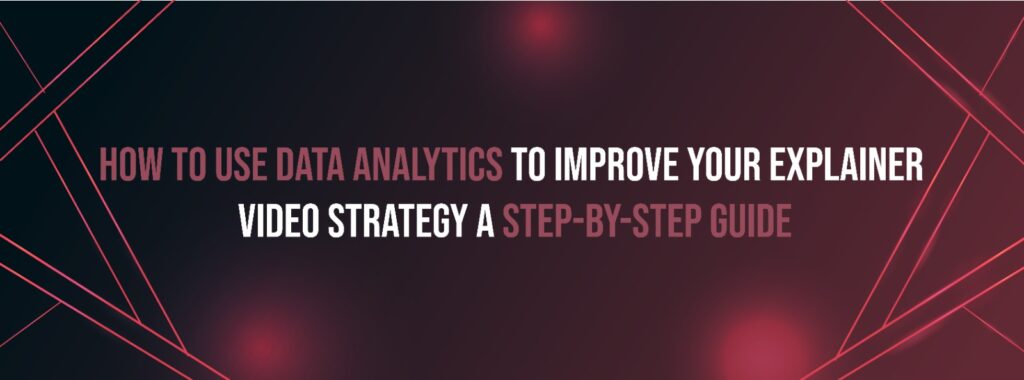
In 2025, video continues to dominate digital marketing, especially in the SaaS industry. However, creating high-quality content isn’t enough. To ensure your SaaS Explainer Video Guide delivers maximum impact, data analytics must be at the heart of your strategy. Understanding what works, what doesn’t, and why is the key to building scalable video content that drives growth. This blog will walk you through how to use analytics to enhance your SaaS Video Marketing Strategy, improve Engaging SaaS Video Content, and craft Animated Explainer Videos for SaaS that convert. Whether you’re a marketer, founder, or content strategist, this guide will show you how to create smarter, data-driven explainer videos from start to finish. 1. Why Data Analytics Matters for Explainer Videos in SaaS Before diving into tools and tactics, it’s essential to understand why data is a game-changer. The SaaS industry thrives on metrics. Similarly, your explainer videos should be optimized not by guesswork, but by measurable performance. Key Benefits of Data-Driven Explainer Videos: With these insights, you can apply SaaS Explainer Video Best Practices with precision and confidence. 2. Set Goals for Your Explainer Video Campaigns The first step in optimizing your SaaS Explainer Video Strategy with analytics is to define clear goals. Common Objectives: ✔ Increase free trial sign-ups ✔ Boost product awareness ✔ Drive email newsletter subscriptions ✔ Support onboarding and product adoption ✔ Improve landing page conversions Once your KPIs are set, you can track them using video analytics tools to measure how well your Animated Explainer Videos for SaaS support those objectives. 3. Key Metrics to Track for Explainer Video Performance Knowing which metrics to monitor can mean the difference between a successful campaign and a missed opportunity. Here are the most important metrics when analyzing Engaging SaaS Video Content: View-Through Rate (VTR) Shows the percentage of viewers who watched your video to the end. A low VTR may indicate that your video is too long or not engaging enough. Average Watch Time A high average indicates that your content holds attention. Click-Through Rate (CTR) How many viewers clicked your CTA or external link. This is a direct indicator of whether your video motivates action. Conversion Rate What percentage of viewers took the desired action after watching? This is a key metric in measuring Increase Conversions with SaaS Videos. Bounce Rate If your video is embedded on a landing page, high bounce rates could mean the video isn’t aligned with user expectations. 4. Tools to Analyze SaaS Explainer Videos Effectively To gather insights from your video content, you’ll need the right tools. Here are the most popular analytics platforms for video: ✔ Wistia – Offers heatmaps, engagement graphs, and CTAs built into the video. ✔ Vimeo Business – Provides advanced analytics and A/B testing. ✔ YouTube Studio – Great for reach, audience retention, and demographics. ✔ Vidyard – Designed for B2B with strong CRM integration. ✔ Google Analytics – Track video engagement via event tracking. Integrating these tools into your SaaS Explainer Video Guide will empower your team with data-backed decisions. 5. Segment Your Audience for Personalized Video Strategies Not all viewers are alike. By using analytics to understand different segments, you can tailor your SaaS Video Marketing Strategy to each group. Segment By: ✔ Traffic source (organic, paid, social, referral) ✔ Viewing device (mobile, desktop, tablet) ✔ Location and language ✔ Behavior on site before and after viewing ✔ Buyer stage (awareness, consideration, decision) This allows you to create Engaging SaaS Video Content that speaks directly to the audience’s needs and increases relevance. 6. A/B Testing for SaaS Explainer Videos One of the most effective ways to optimize your video is through A/B testing. You can compare two versions of a video with slight variations and see which performs better. Test Variables: ✔ Script or voiceover ✔ CTA placement and design ✔ Video length ✔ Color themes and branding ✔ Background music or effects By continuously testing and refining, you’ll discover the formula that leads to the Best Explainer Videos for SaaS. 7. Using Data to Improve the Script and Storyline Great explainer videos start with great storytelling. Analytics can provide insight into how well your narrative resonates with viewers. ✔ If drop-off rates are high early, revise your hook or opening. ✔ If viewers pause or replay certain sections, expand on those points. ✔ If CTA engagement is low, consider adjusting your message clarity or placement. These insights can be looped back into your scripting process for How to Create SaaS Explainer Videos that are compelling and clear. 8. Optimizing Length and Timing with Data In 2025, attention spans are still shrinking. Use analytics to determine the ideal length of your explainer videos. ✔ Aim for 60–90 seconds based on average watch time trends. ✔ Keep key points and value props in the first 30 seconds. ✔ Don’t bury your CTA at the very end—consider mid-roll CTAs. Data can show you exactly when users start to drop off, allowing you to restructure videos for better retention. 9. Enhancing CTAs Based on Conversion Data The call-to-action (CTA) is where the magic happens. Whether it’s signing up for a trial or booking a demo, your CTA must be optimized to perform. Tips: ✔ Use action-driven language (“Start Your Free Trial Now” vs. “Learn More”) ✔ Experiment with different CTA types (button, form, video overlay) ✔ Use heatmaps to see where users are clicking ✔ Analyze time-to-click data for CTA timing When used properly, CTAs can dramatically Increase Conversions with SaaS Videos. 10. Incorporating Feedback and Behavior Patterns User behavior and qualitative feedback are just as important as quantitative data. ✔ Use in-video surveys or feedback forms ✔ Monitor comment sections and user reviews ✔ Track behavioral signals like rewatches, pauses, or exits Patterns in these behaviors offer insights into how to make your Animated Explainer Videos for SaaS more engaging and educational. 11. Using Analytics for Cross-Channel Video Performance Your video’s performance varies by platform. Monitor how the same video performs across: ✔ Website landing
8 Inspiring Blockchain Animation Explainer Videos for Your Business Success and Growth in 2025
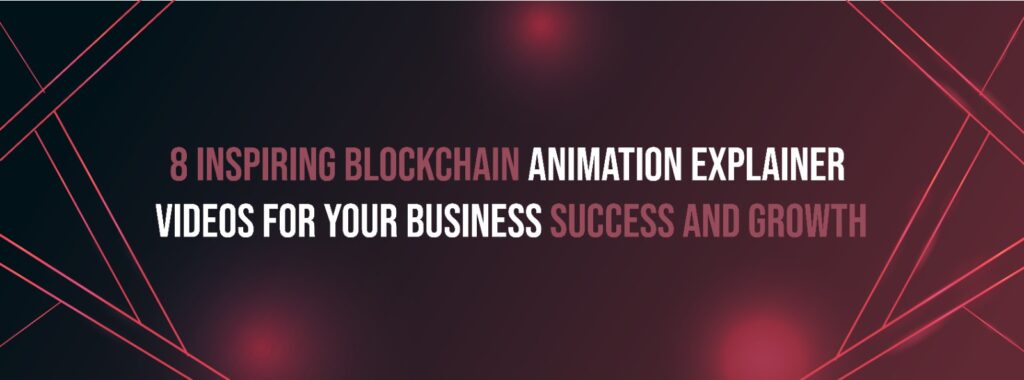
As blockchain technology continues to reshape industries in 2025, businesses are racing to simplify complex ideas and communicate their value proposition. One of the most powerful tools to bridge that gap is animation. Blockchain Explainer Videos have become a go-to medium for startups, crypto companies, DeFi platforms, and Web3 brands to capture attention and educate audiences. This blog highlights 8 exceptional Animated Blockchain Videos that are driving business success and user engagement. You’ll also learn how to implement a Blockchain Video Marketing Strategy, use Blockchain Animation for Business effectively, and create Engaging Blockchain Video Content that helps your company stand out. Let’s explore these inspiring examples and extract tips to boost your blockchain brand’s growth. Why Blockchain Needs Explainer Videos in 2025 Blockchain and Web3 technologies are notoriously complex. Terms like decentralization, smart contracts, NFTs, staking, and DAOs can be overwhelming to new users or investors. Animated Videos for Blockchain Growth break down these ideas into easy-to-digest, visual content that keeps audiences engaged. Benefits of Blockchain Explainer Videos: With visually appealing storytelling, companies are turning Animated Blockchain Videos into powerful growth tools. 1. Ethereum (Foundation Explainer) Ethereum’s official explainer video uses abstract animation and minimalist design to showcase the blockchain’s core concepts. It outlines smart contracts, the Ethereum Virtual Machine (EVM), and decentralized applications in a way that’s accessible to non-technical viewers. ✔ Visual metaphor for smart contracts ✔ Simple narration and soothing tone ✔ Effective balance of animation and messaging This video is a model of clarity, ideal for brands learning How to Use Blockchain Animation to communicate fundamental principles. 2. Chainlink (Oracles Explained) Chainlink’s animated explainer highlights its role as a bridge between smart contracts and real-world data. It uses motion graphics and data visualizations to demonstrate how oracles function. ✔ Crisp, tech-driven design ✔ Clear CTA at the end for developers ✔ Strong educational component This example shows how Blockchain Explainer Videos can position a project as a thought leader by simplifying a niche concept. 3. Binance Academy (What Is Blockchain?) Binance Academy released an animated video that explains blockchain at a beginner level. The use of bright colors, illustrations, and analogies like “a chain of blocks” makes the video fun and engaging. ✔ Excellent entry-level resource ✔ Explains decentralization with animations ✔ Animated metaphors improve understanding If your business targets crypto newbies, this style of Engaging Blockchain Video Content can win trust and boost your credibility. 4. Ripple (Internet of Value) Ripple’s animated explainer titled “The Internet of Value” discusses the future of global payments. It uses futuristic animation and typography to show how RippleNet enables cross-border transactions. ✔ Bold and sleek visuals ✔ Professional voiceover with high production quality ✔ Strategic storytelling on financial freedom This video exemplifies Blockchain Animation for Business with a focus on economic empowerment and global scalability. 5. IBM Blockchain (Supply Chain Use Case) IBM created an animated explainer that demonstrates how blockchain enhances supply chain transparency. The video follows the journey of a mango from farm to supermarket, using simple characters and 2D animation. ✔ Real-world use case makes it relatable ✔ Strong narrative flow ✔ Clear illustration of data traceability This is one of the Best Blockchain Explainer Videos that shows practical value, making it ideal for B2B campaigns. 6. Polkadot (Connecting Blockchains) Polkadot’s animated video visualizes how its network enables different blockchains to interact. It uses vivid illustrations and dynamic motion design to simplify interoperability. ✔ Colorful, energetic animation ✔ Technical concepts explained visually ✔ Emphasizes community and innovation If your product deals with multi-chain architecture, this style of Animated Blockchain Videos is a great reference. 7. Coinbase (Intro to Crypto Wallets) Coinbase uses animation to explain how crypto wallets work, showing hot vs. cold storage, private keys, and user security. It’s part of their educational onboarding series. ✔ High accessibility ✔ Focuses on user safety ✔ Great for product adoption This aligns perfectly with Blockchain Video Marketing Strategy—educating users while building brand trust. 8. Avalanche (Fast and Scalable Blockchain) Avalanche’s explainer video showcases its speed and scalability compared to other blockchains. It uses motion design, charts, and comparison animations to drive home key differentiators. ✔ Positioning against competitors ✔ Highlights performance metrics visually ✔ Modern and sleek design If you’re targeting investors or developers, this approach to Animated Videos for Blockchain Growth can demonstrate your technical superiority. How to Use Blockchain Animation Effectively Animation is not just about pretty visuals—it’s about telling a story. Here’s How to Use Blockchain Animation to enhance your business message: ✔ Know Your Audience: Use beginner-friendly language for general users or technical visuals for developers. ✔ Define Your Goal: Awareness, education, sign-ups, investment—each goal needs a tailored message. ✔ Use Metaphors: Visual metaphors help explain abstract ideas like decentralization or tokenomics. ✔ Focus on Clarity: Avoid unnecessary complexity. Break information into easy steps. ✔ Keep it Short: Aim for 60–90 seconds for maximum engagement. These principles will keep your Blockchain Video Marketing Strategy focused and effective. Best Practices for Blockchain Explainer Videos in 2025 To create standout blockchain explainer videos, follow these updated best practices: ✅ Keep Branding Consistent Use your colors, typography, and voice to strengthen brand identity. ✅ Optimize for Mobile Most viewers will be on mobile devices—ensure your animations and subtitles are mobile-friendly. ✅ Add Captions Accessibility matters, and subtitles boost view time on silent autoplay platforms. ✅ Include a Clear CTA Encourage viewers to sign up, try a demo, or visit your website. ✅ Distribute Smartly Post on YouTube, X (Twitter), TikTok, and integrate on your landing pages. These SaaS Explainer Video Best Practices adapted for blockchain help drive engagement. Developing a Blockchain Video Marketing Strategy Here’s how to build a robust Blockchain Video Marketing Strategy for 2025: 🎯 Identify Key Goals: 🎥 Choose the Right Format: 📈 Measure Results: A strategic, metric-driven approach ensures your Blockchain Explainer Videos deliver ROI. Why Animated Blockchain Videos Work for Every Business From startups to enterprise tech, Animated Blockchain Videos are versatile and cost-effective. Whether you’re introducing a new token,
The Role of Animation in E-Commerce Websites: Tips and Best Practices in 2025

In 2025, online shopping is more visual and interactive than ever. With consumers demanding faster, smoother, and more personalized experiences, e-commerce brands must stay ahead of design trends. One of the most transformative tools available today is animation. Whether it’s a subtle hover effect, a dynamic product display, or immersive micro-interactions, Animation in E-Commerce enhances user engagement and encourages conversions. In this blog, we explore how E-Commerce Website Animation is changing the way users interact with digital storefronts. We’ll dive into practical strategies, discuss how to Boost Sales with Animation, and outline Best Animation Practices for Online Stores to help you elevate your brand experience and maximize ROI. 1. Why Animation Matters in E-Commerce Websites The use of Website Animation for Better Conversions is not just a trend—it’s a vital UX strategy. Thoughtfully implemented animations help guide visitors, make websites feel more alive, and provide visual feedback that builds trust. Key Benefits of Animation in E-Commerce: Incorporating Interactive Animations for Online Shopping also improves memorability, which can lead to more return visits and brand loyalty. 2. Types of E-Commerce Website Animation That Work in 2025 Animation can be as subtle or complex as needed, depending on your product, audience, and brand identity. Here are the most effective types of E-Commerce Website Animation being used today: ✅ Micro-Interactions Small animations triggered by user actions like clicks, scrolls, or hovers. They offer real-time feedback, making the experience feel intuitive. ✅ Loading Animations Spinners, progress bars, or creative loaders keep users engaged during wait times and reduce perceived loading time. ✅ Product Reveal Animations Smooth transitions when showcasing products help users better understand the features and variations. ✅ Scroll-Triggered Animations These guide the user’s journey by revealing content as they scroll, making the experience interactive and exploratory. ✅ Hover Effects Hover states enhance interactivity and prompt user curiosity, such as zooming into product images. These techniques make Using Motion Graphics in E-Commerce more engaging and functional. 3. How Animation Enhances UX in E-Commerce A smooth and pleasant shopping experience translates directly into higher sales and customer satisfaction. Let’s look at How Animation Enhances UX in E-Commerce platforms: 🛒 Visual Hierarchy Animations can draw attention to CTAs, highlight featured products, and help users navigate. 🛒 User Guidance Animated progress indicators in a checkout flow provide clarity on how many steps are left. 🛒 Emotional Connection Motion adds personality and can convey a brand’s tone and emotion more effectively than static visuals. 🛒 Mobile Experience On mobile devices, animations help replace hover functions, supporting gestures like swipes and taps. By elevating UX, businesses can Boost Sales with Animation organically. 4. Boost Sales with Animation: Real Results Let’s look at how companies are leveraging animation to drive measurable growth. 🛍️ Case Study: ASOS ASOS uses smooth hover animations, dynamic product galleries, and subtle loading indicators. These features reduced bounce rates and increased conversion by 18% in A/B tests. 🛍️ Case Study: Apple Apple’s product pages use Interactive Animations for Online Shopping to guide users through key features with precision and elegance. 🛍️ Case Study: Warby Parker Warby Parker implemented animations in their virtual try-on process. This not only improved engagement but also reduced return rates by 21%. These examples highlight how E-Commerce Website Animation drives customer trust and sales. 5. Best Animation Practices for Online Stores in 2025 Not all animations help. Poorly implemented ones can slow down a site or overwhelm users. Here are the Best Animation Practices for Online Stores to follow: ✅ Prioritize Speed Animations should be optimized to avoid negatively impacting page load time. Lightweight code and compressed assets are crucial. ✅ Keep It Purposeful Every animation should have a purpose. Don’t animate just for flair—make sure it contributes to navigation or product clarity. ✅ Align With Brand Identity The tone, speed, and style of animations should align with your brand’s personality. ✅ Make It Optional If using large animations or interactions, ensure users can skip or disable them for accessibility. ✅ Use Repetition Sparingly Repeated animations can feel annoying. Limit them on elements like banners or CTA buttons. ✅ Consider Accessibility Animations should be compliant with accessibility guidelines. Use prefers-reduced-motion CSS queries when needed. Following these practices ensures your E-Commerce Website Animation supports—not distracts from—your core goals. 6. Tools for Adding Animation to Your E-Commerce Website Whether you use Shopify, WooCommerce, Magento, or a custom CMS, there are tools and libraries that make implementing animations easier: ✔ LottieFiles – Lightweight animation files built in After Effects and rendered as JSON. ✔ GSAP (GreenSock) – Advanced JS animation library for web interfaces. ✔ Framer Motion – React-based animation library for smooth, dynamic transitions. ✔ Rive – Real-time interactive motion graphics that support logic-based animations. ✔ Adobe Animate – Professional design tool for complex motion sequences. These tools help brands achieve rich Website Animation for Better Conversions without compromising speed. 7. Where to Use Animation Strategically in E-Commerce Pages Let’s break down where animations can be most impactful across the buyer journey: 🧭 Homepage: ✔ Hero image reveals ✔ Scroll-triggered product highlights ✔ Featured product animations 🧭 Product Pages: ✔ 360-degree views ✔ Option selectors (size, color) ✔ Zoom and pan image effects 🧭 Category Pages: ✔ Animated filters and sorting options ✔ Hover-to-preview product tiles 🧭 Cart & Checkout: ✔ Animated cart updates ✔ Progress indicators ✔ Confirmation messages with delight elements These applications of Animation in E-Commerce make the user journey more intuitive and enjoyable. 8. Using Motion Graphics in E-Commerce for Brand Storytelling Motion graphics are perfect for visual storytelling. Rather than relying solely on copy or static banners, brands can showcase: ✔ How a product works ✔ Its benefits and features ✔ The values behind the brand Whether it’s a quick animated intro, a video banner, or a full product demo, Using Motion Graphics in E-Commerce adds depth and appeal. Examples: ✔ Patagonia uses motion graphics to tell sustainability stories. ✔ Nike showcases products in action with animated scenes. ✔ Casper explains mattress tech through animated illustrations. This
5 Essential Tips to Create Highly Effective 30-Second Explainer Videos (Step by Step) in 2025

In today’s fast-paced digital world, attention spans are shorter than ever. That’s why creating concise, powerful content like 30-second explainer videos is a must-have in your marketing toolkit. These short videos are ideal for product launches, service introductions, app tutorials, or campaign teasers. But how do you ensure that your short video makes an impact in just half a minute? That’s where this step-by-step guide comes in. Here, we share five crucial 30-Second Explainer Video Tips that help you connect, engage, and convert your audience—all in under 30 seconds. Whether you’re a marketer, brand owner, or content creator, this blog outlines how to apply a solid Short Video Marketing Strategy that turns viewers into customers. Let’s dive in! Why 30-Second Explainer Videos Are So Effective in 2025 Short-form content has exploded in popularity, and with platforms like Instagram Reels, TikTok, YouTube Shorts, and LinkedIn video ads, the need for quick, engaging content is higher than ever. A well-crafted 30-second explainer video delivers information fast, entertains, and prompts action—all without losing the viewer. Key Benefits: Now, let’s break down the Step-by-Step Explainer Video Creation process and see what it takes to succeed. Tip 1: Plan Your Script for Speed and Clarity Every second matters in a 30-second video. A solid script is the foundation of an effective explainer. The goal is to deliver one core message quickly and clearly. ✅ What Makes a Great Script: ✔ Start strong with a hook in the first 3 seconds ✔ Focus on one idea only ✔ Use simple, concise language ✔ End with a strong CTA (Call to Action) A typical script structure for High-Converting Short Explainer Videos might look like this: Pro Tip: Speak your script aloud while writing. If it takes longer than 30 seconds to say, simplify it. Tip 2: Design With Motion and Focused Visuals Once your script is ready, it’s time to visualize it. When creating short videos, less is more. Cluttered visuals will confuse viewers and reduce message clarity. ✅ Design Essentials: ✔ Match visuals to the script word-for-word ✔ Use 2D motion graphics or animated characters to illustrate key points ✔ Keep the background simple ✔ Animate transitions smoothly ✔ Use branded colors and typography Following these Animation Tips for Short Explainer Videos ensures your content feels professional and engaging. For tools, consider: Animation gives life to your message and keeps audiences glued to the screen. Tip 3: Use a Strong Hook to Capture Immediate Attention The first 3 seconds are everything. If you don’t hook your audience instantly, they’re gone. That’s why a compelling opener is critical in How to Create Short Explainer Videos. ✅ Hook Ideas: ✔ Ask a direct question: “Tired of slow internet?” ✔ Present a shocking stat: “98% of people waste 5 hours a week…” ✔ Make a bold claim: “Double your leads in 7 days!” ✔ Use motion and sound to surprise or delight Once the hook draws them in, deliver your value prop fast. The best Short Video Marketing Strategy understands the psychology of the scroll and fights for attention right away. Tip 4: Optimize Audio, Voiceover, and Captions While visuals are powerful, your voiceover, sound design, and captions must be on point. The right voice can add emotion, urgency, and credibility. ✅ Audio Tips: ✔ Use a professional voiceover artist or clear AI-generated voice ✔ Add royalty-free background music for energy ✔ Time voiceover precisely with visuals ✔ Use closed captions for silent viewing (especially on social platforms) Including captions increases accessibility and retention, while sound adds depth. For Engaging Explainer Video Guide content, audio can’t be overlooked. Tip 5: Test, Measure, and Refine for Better Results You’ve written the script, animated the visuals, and added great sound. Now what? It’s time to track performance and improve. ✅ What to Analyze: ✔ View-through rate (VTR) ✔ Click-through rate (CTR) ✔ Conversions (sign-ups, sales, downloads) ✔ Drop-off rate—when people stop watching Use analytics from platforms like YouTube, Wistia, Vimeo, or even TikTok and LinkedIn. If your video isn’t converting, go back and adjust your script, hook, or CTA. A/B testing different versions is key to Best Practices for 30-Second Videos that actually convert. Examples of High-Converting 30-Second Explainer Videos Let’s look at brands doing it right: 💡 Grammarly A clean, short video that introduces the product, shows how it works, and ends with a CTA—all in under 30 seconds. 💡 Dropbox Simple animation explains file sharing in seconds. The focus is on the problem and how Dropbox solves it visually. 💡 Slack Their onboarding videos use bright visuals, minimal text, and smooth narration to guide the user experience quickly. These videos follow every Engaging Explainer Video Guide principle by simplifying complex ideas into fast, compelling stories. Choosing the Right Platform for Your 30-Second Video Where you publish matters as much as what you publish. Here’s how to adapt your Short Video Marketing Strategy by platform: 📱 Instagram Reels & TikTok: 💼 LinkedIn: 🎥 YouTube Shorts: 🌐 Website Landing Pages: Always tailor the format, size, and content style to suit your chosen channel. Top Tools for Creating 30-Second Explainer Videos in 2025 Creating professional videos is now easier than ever. Here are some tools to bring your Step-by-Step Explainer Video Creation to life: ✔ Animaker – Easy drag-and-drop animation builder ✔ Powtoon – Ideal for corporate explainer videos ✔ Lumen5 – AI video tool using blog-to-video transformation ✔ Doodly – Whiteboard animation ✔ Pictory – AI-driven script-to-video tool ✔ Synthesia – Create videos with AI avatars and voiceovers These tools reduce production time and lower costs, helping you produce High-Converting Short Explainer Videos without needing a massive team. Mistakes to Avoid When Making 30-Second Explainers Even seasoned marketers fall into traps. Watch out for these common issues: ❌ Overloading the Message Trying to say too much will confuse viewers. Stick to one goal and one message. ❌ Weak Visuals Poor-quality animations or outdated design will hurt credibility. ❌ No Clear CTA If viewers don’t know what to do next, you’ll
8 Mistakes to Avoid When Creating an Explainer Video: Dos and Don’ts in 2025
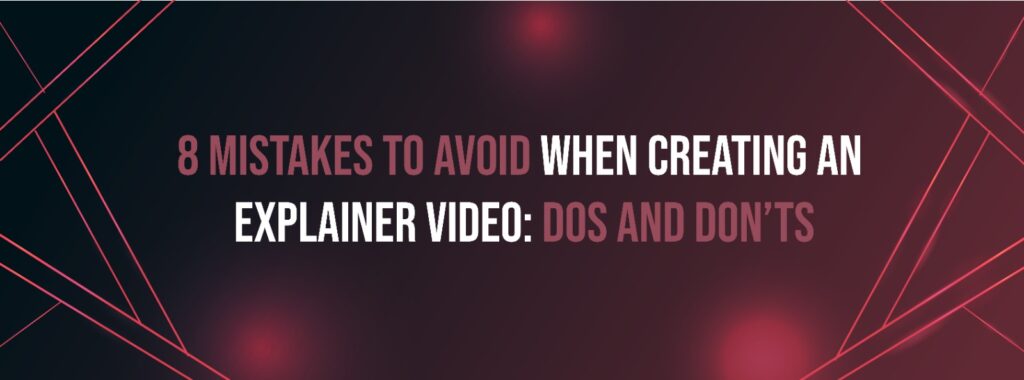
Explainer videos have become essential for brands, SaaS products, and startups looking to simplify their messaging and engage modern audiences. In 2025, video content continues to dominate digital communication, with explainer videos leading the charge for clarity, engagement, and conversions. However, creating an effective explainer video isn’t just about animations and background music—it’s about strategy, storytelling, and avoiding critical missteps. In this guide, we highlight 8 crucial Explainer Video Mistakes to Avoid, covering the Dos and Don’ts of Explainer Videos so you can create content that converts. Whether you’re a marketing pro or a first-time video creator, this blog will walk you through common errors, provide insights on Explainer Video Best Practices, and help you deliver high-quality, results-driven content. 1. Mistake: Ignoring the Target Audience Biggest Explainer Video Fails often start with a fundamental misunderstanding of the audience. If you don’t know who you’re speaking to, how can you expect your video to resonate? ❌ Don’t: ✅ Do: Knowing your audience helps with message clarity and ensures your video delivers value from the first second. 2. Mistake: Making the Video Too Long In 2025, attention spans are shorter than ever. One of the most Common Explainer Video Errors is overloading the video with too much information. ❌ Don’t: ✅ Do: Tips for High-Quality Explainer Videos always stress the importance of brevity. Long videos often lead to high bounce rates and lower engagement. 3. Mistake: Weak or Confusing Script Even the best visuals can’t save a poorly written script. The script is the backbone of your explainer video. ❌ Don’t: ✅ Do: The number one rule in How to Make a Perfect Explainer Video is to nail the script before touching any animation. 4. Mistake: Prioritizing Style Over Substance It’s easy to get caught up in beautiful animations and trendy motion graphics. However, aesthetic appeal should never override clarity and messaging. ❌ Don’t: ✅ Do: Avoid These Explainer Video Mistakes by keeping your viewer’s understanding as your top priority. 5. Mistake: Forgetting the Call to Action (CTA) Many explainer videos engage the viewer but don’t tell them what to do next. This is one of the most overlooked Explainer Video Mistakes to Avoid. ❌ Don’t: ✅ Do: CTAs turn passive viewers into active leads—don’t miss the opportunity to convert. 6. Mistake: Poor Sound Quality and Voiceover Sound matters. Your voiceover should be professional and match the mood and pace of your visuals. ❌ Don’t: ✅ Do: Dos and Don’ts of Explainer Videos always include perfecting audio, which is often the difference between amateur and pro-level production. 7. Mistake: Using Generic or Low-Quality Visuals Stock animations and generic templates can cheapen your brand’s image. While templates are helpful, customization is key to standing out. ❌ Don’t: ✅ Do: Tips for High-Quality Explainer Videos emphasize the need for original, on-brand visual storytelling. 8. Mistake: Not Optimizing for Platform and Mobile Viewing In 2025, most users consume content on mobile. Failing to optimize for different platforms and screen sizes is one of the Common Explainer Video Errors that impacts engagement. ❌ Don’t: ✅ Do: Think beyond YouTube—explainer videos live on websites, Instagram Reels, LinkedIn, TikTok, and landing pages. Bonus: The Right Lengths for Different Platforms in 2025 Here’s a quick guide for platform-based video optimization: Platform Ideal Video Length Format YouTube 60–90 seconds Landscape Instagram Reels 15–30 seconds Portrait LinkedIn 45–75 seconds Square TikTok 15–60 seconds Portrait Landing Pages 30–60 seconds Landscape Adapt your video layout and messaging to the medium for best results. Explainer Video Best Practices for Success To tie it all together, here’s a checklist of Explainer Video Best Practices for 2025: ✅ Define a clear message before scripting ✅ Prioritize brevity and clarity ✅ Use professional voiceover and music ✅ Align visuals with the brand ✅ Add a strong CTA at the end ✅ Optimize for mobile and social platforms ✅ A/B test different versions ✅ Track analytics and iterate Follow this, and you’ll avoid the Biggest Explainer Video Fails and produce compelling, engaging content. Real-World Examples of Explainer Video Success (and Failure) ✅ Success: Headspace Headspace uses soft animations and calm voiceovers to explain mindfulness in just 60 seconds. Their videos are engaging, brand-aligned, and result in massive user downloads. ❌ Fail: A Crypto Startup (Name Omitted) A well-funded blockchain project released a 3-minute explainer filled with jargon, complex visuals, and no CTA. The result? Low engagement and poor conversion. ✅ Success: Grammarly Grammarly’s short, humorous explainers highlight a problem (awkward writing), present the solution, and demonstrate the app—all within 60 seconds. These examples highlight what happens when you follow or ignore How to Make a Perfect Explainer Video principles. Conclusion: Make Smarter Explainer Videos in 2025 Explainer videos can be powerful sales and marketing tools—when done right. But when common mistakes creep in, they lose their power and confuse or disengage viewers. By learning these 8 Explainer Video Mistakes to Avoid, you’re already ahead of the curve. Stick to the Dos and Don’ts of Explainer Videos, apply modern trends, and keep your audience at the center of every decision. Remember, success lies in simplicity, clarity, and a compelling story told well. Whether you’re creating one in-house or outsourcing, make sure every second counts. Ready to create your next high-converting explainer video? Start with strategy, avoid the pitfalls, and let your message shine. Frequently Asked Questions (FAQ’s) What Should Be Included in an Explainer Video? An effective explainer video should include the following key elements: What is an Explainer Video Strategy? An explainer video strategy involves a planned approach to create and utilize explainer videos effectively. Key components include: How Do You Script an Explainer Video? Scripting an explainer video involves several steps: Are Explainer Videos Still Effective? Yes, explainer videos remain highly effective for several reasons: What Types of Explainer Videos Are There? There are several types of explainer videos, each serving different purposes:
How 3D Visual Content Can Transform Your Social Media Strategy in 2025
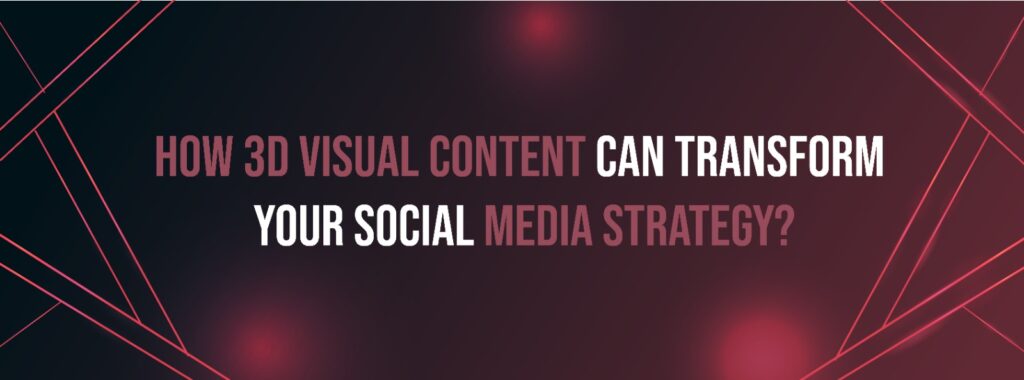
The social media landscape is constantly evolving—and in 2025, 3D content is emerging as a game-changer for brands, influencers, and creators. With higher competition, shrinking attention spans, and a saturated digital space, you need bold, immersive content to stand out. That’s where 3D Visual Content for Social Media steps in. From Instagram reels and Facebook ads to TikTok campaigns and LinkedIn posts, 3D visuals elevate storytelling, product presentation, and brand identity. This blog explores how 3D Animation for Social Media Marketing can breathe life into your digital content strategy, and how to leverage it for better engagement, growth, and ROI. Let’s dive into the creative, strategic, and technical advantages of integrating 3D into your social campaigns in 2025. Why 3D Content Is Dominating Social Media in 2025 Social media users crave innovation and interactivity. Static visuals and plain video formats often get scrolled past in milliseconds. However, 3D visuals break that pattern. Benefits of 3D Content: Simply put, Social Media Marketing with 3D Visuals helps brands stay modern, tech-savvy, and relatable. How 3D Content Improves Social Media Strategy So, how does adding dimension literally and figuratively elevate your online presence? 1. Enhanced Storytelling With 3D, you can create scenes and characters that bring your brand’s narrative to life. Rather than explaining, you can show complex ideas through visual metaphors or simulations. 2. Better Product Demonstrations 360-degree product views, virtual unboxings, or zoom-ins on features increase transparency and customer confidence. This is especially powerful for ecommerce and tech brands. 3. Boosted Brand Identity Custom 3D Graphics for Social Media Growth help establish a unique visual language, setting your brand apart with recognizable, on-brand aesthetics. 4. Improved Engagement Metrics Posts with interactive or dynamic 3D visuals tend to outperform traditional posts. Expect more shares, saves, and longer view times. By incorporating 3D into your toolkit, you build a strategy that’s creative, competitive, and conversion-focused. Top Ways to Boost Social Media Engagement with 3D Here’s how leading brands are using 3D Visual Content for Social Media to boost interactions: ✅ Product Highlights Showcase features from every angle. Add glow effects, particle trails, or explainer-style 3D overlays. ✅ Brand Mascots Create a 3D version of your character or logo that can be reused in stories, posts, and ads. ✅ Interactive Filters Using AR-powered platforms like Spark AR or Lens Studio, brands create filters with 3D assets, boosting shares and discoverability. ✅ Animated Posts Replace flat images with eye-catching 3D animations that loop or follow the scroll. ✅ Gamified Stories Combine 3D visuals with polls, quizzes, or interactive buttons for better user engagement. If you want to Boost Social Media Engagement with 3D, think movement, detail, and surprise. Best 3D Content Ideas for Social Media in 2025 Running low on creative juice? Here are the Best 3D Content Ideas for Social Media to inspire your next viral post: 🔹 3D Logo Reveals Turn your logo into a short animated story or make it morph from objects relevant to your industry. 🔹 3D Countdown Timers Build excitement for launches, events, or offers with dramatic, dynamic countdowns. 🔹 3D Tutorials or “How It Works” Videos Use animation to break down processes in a fun, simple way. 🔹 3D Memes and Stickers Trend jacking? Add humor to trending topics using 3D objects or motion overlays. 🔹 Augmented Reality (AR) Showcases Let users “try on” your product or view it in their space using mobile AR with 3D assets. These types of content support Social Media Marketing with 3D Visuals while making your feed pop with originality. Tools to Create 3D Visual Content for Social Media You don’t need to be a Pixar animator to start building. Here are top tools for beginners and pros to develop 3D Animation for Social Media Marketing: 🔧 Easy-to-Use Platforms: 🎥 Pro-Level Software: 📱 AR Creation Tools: Mastering these tools allows your team to create stunning visuals that align with your strategy. Examples of Brands Winning with 3D Visuals 🌟 Nike Nike uses hyper-stylized 3D animations to launch new sneakers, often blending surreal environments with photorealistic shoes. This keeps fans excited and engaged with every drop. 🌟 Sephora Their AR try-on feature uses 3D product visualization to let users preview lipsticks, foundations, and more directly on their face via social apps. 🌟 Apple Product showcases include intricate 3D motion design, helping users see inside devices, explore features, and appreciate innovation. Each of these brands leverages Impact of 3D Design on Social Media to elevate interaction, storytelling, and credibility. Best Practices for 3D Social Content in 2025 Success with 3D content requires more than beautiful visuals. It takes strategy. Here’s how to approach it: ✅ Align 3D with Brand Goals Ask: Does this animation support your core message or campaign objectives? ✅ Maintain Brand Consistency Your 3D graphics should use familiar color schemes, typography, and tone. ✅ Optimize File Size Large 3D files can slow load times. Compress for mobile while maintaining quality. ✅ Test Multiple Platforms Different social platforms prioritize different content types. A 3D TikTok might differ from a LinkedIn showcase. ✅ Prioritize Accessibility Include alt-text, captions, or simplified versions for screen readers and non-visual audiences. By following these steps, you ensure your 3D Visual Content for Social Media isn’t just attractive—it’s impactful. How 3D Visuals Drive Conversions and ROI Engagement is great, but what about the bottom line? 3D content isn’t just flashy—it converts. Here’s why: 💡 Greater Clarity Products with 3D showcases reduce confusion and increase confidence. 💡 More Shares = More Traffic Highly visual posts are shared more often, expanding organic reach. 💡 Reduced Bounce Rates Interactive or scroll-reactive 3D visuals keep users on-page longer. 💡 Elevated Brand Trust High-quality 3D content positions your brand as cutting-edge and premium. 💡 Increased Click-Through Rates Motion-graphic CTAs outperform static CTAs, encouraging user interaction. These are the core benefits when you Boost Social Media Engagement with 3D while targeting conversions. 3D vs. Traditional Content: A Side-by-Side Comparison Feature Traditional Content 3D Visual Content for Social Media Engagement Rate Moderate High Storytelling
Top 14 Best Marketing Animation Videos from Leading Global Brands in 2025

In 2025, animation has solidified its role as a cornerstone of digital marketing. With evolving visual trends, diverse platforms, and increasingly sophisticated audiences, animation is no longer just for entertainment—it’s a vital branding and storytelling tool. This year has seen a surge in Best Marketing Animation Videos, with global giants using the format to build emotional connections, boost engagement, and go viral. From animated commercials to explainer videos and social reels, top companies are redefining content strategy with creativity and clarity. Whether for awareness, conversions, or emotional branding, these videos stand as masterclasses in effective communication. This blog spotlights 14 of the Top Animated Ads by Global Brands in 2025, dissecting what makes them powerful and offering inspiration for your next campaign. Why Animation Works for Marketing in 2025 Animation is captivating, timeless, and versatile. As audiences become more mobile-centric and attention spans shrink, animation delivers messages fast, memorably, and with style. Let’s explore why animation is now a top-tier choice for brand storytelling: No surprise then that the Best Animation Videos for Marketing are now at the center of high-performing digital strategies. Top 14 Best Marketing Animation Videos from Leading Global Brands Let’s explore examples of Successful Animated Marketing Campaigns from brands that mastered creativity, narrative, and design in 2025. 1. Apple – Privacy Unboxed Apple created a beautifully stylized 2D animation to explain its privacy features. With clean, flat illustrations and playful transitions, it kept viewers entertained while demystifying complex tech topics. ✅ Why it works: Simplifies technical features and supports brand transparency. Category: Best Marketing Animation Videos 2. Nike – Air Redefined Nike’s 3D animated spot showcased the evolution of the Air Max sneaker line with morphing footwear across decades. The campaign combined nostalgic colors with futuristic design. ✅ Why it works: Appeals to both long-time fans and Gen Z with a perfect blend of storytelling and innovation. Category: Top Animated Ads by Global Brands 3. Google – Search Beyond Words This animated campaign by Google highlighted voice search and visual search capabilities. A mix of real-time data visualization and animated characters brought this feature to life. ✅ Why it works: Turns abstract technology into relatable, everyday benefits. Category: Brand Promotion with Animation 4. Coca-Cola – Magic in Every Drop Coca-Cola launched an animated holiday ad campaign featuring magical bubbles from every bottle. The campaign tied in nostalgia, kindness, and storytelling through Pixar-style visuals. ✅ Why it works: Emotionally resonant and visually enchanting. Category: Successful Animated Marketing Campaigns 5. Spotify – Wrapped 2025 Spotify used motion graphics and vibrant animation to visualize individual user data in their Wrapped campaign. Custom animations for top genres, moods, and artists. ✅ Why it works: Data-driven personalization with slick animation keeps users engaged. Category: Marketing Strategies with Animation 6. Samsung – The Foldable Story To market their new foldable phone, Samsung launched a fully animated story showing how flexible screens can change lives. A single character navigated challenges through a foldable device. ✅ Why it works: Combines product benefits with character-driven storytelling. Category: Best Animation Videos for Marketing 7. McDonald’s – McDelivery Nights This cozy animated ad played on late-night cravings with a warm, illustrative 2D style. It used a recurring animated character in multiple mini-stories across platforms. ✅ Why it works: Builds brand warmth and relatability with continuity. Category: Leading Brands Using Animation 8. Adobe – Creativity for All Adobe’s campaign featured rapid-style character animations showing everyday creators turning ideas into visuals using Adobe Express. It embraced diversity, fast transitions, and trendy music. ✅ Why it works: Speaks directly to their target market: fast-paced, digital-native creatives. Category: Top Animated Ads by Global Brands 9. Tesla – AI Explained Tesla launched a visually engaging explainer-style animation showing how its self-driving technology works. Using futuristic UI graphics and motion design. ✅ Why it works: Breaks down complexity with futuristic, brand-aligned visuals. Category: Brand Promotion with Animation 10. Airbnb – Belong Anywhere 2.0 Airbnb reimagined its core brand promise with story-driven, animated tales of travelers across the globe. Soft palettes and hand-drawn elements created a cozy feel. ✅ Why it works: Touches on emotional storytelling while reinforcing global accessibility. Category: Successful Animated Marketing Campaigns 11. LEGO – Build Your World LEGO’s animation campaign lets kids and adults alike watch ideas materialize into LEGO builds using magical 3D animation. Hyper-realistic and fast-paced. ✅ Why it works: Sparks imagination while staying product-centric. Category: Animated Commercials That Went Viral 12. Amazon – Alexa’s Universe Amazon unveiled a cosmic-themed animation that visualized Alexa’s expanding skills in a sci-fi cartoon style. Planets, satellites, and alien voice assistants filled the screen. ✅ Why it works: Reinforces innovation while making tech fun and less intimidating. Category: Best Marketing Animation Videos 13. Duolingo – Learn with Duo The Duo owl got a makeover in 2025 with short-form animated skits that were meme-ready and humorous. These animations went viral across TikTok and Instagram. ✅ Why it works: Entertaining, platform-optimized, and perfect for Gen Z humor. Category: Animated Commercials That Went Viral 14. Microsoft – AI at Work Microsoft combined animation with kinetic typography and infographics to explain their workplace AI tools. Sleek, business-centric, and highly shareable. ✅ Why it works: Brings technical clarity to B2B audiences with minimal fuss. Category: Marketing Strategies with Animation Common Traits of Successful Animated Marketing Campaigns What do these winning examples have in common? 🔸 Brand Alignment The animation style reflects the brand’s tone, industry, and values. 🔸 Emotion + Logic They combine emotional storytelling with product education. 🔸 Cross-Platform Optimization Each campaign includes multiple formats for various platforms (Reels, YouTube, Stories, etc.). 🔸 Shareability These videos use humor, relatability, or surprise to boost shares. These commonalities explain why they’re considered Top Animated Ads by Global Brands. How to Create Your Own Best Animation Videos for Marketing Inspired? You can craft a campaign worthy of this list too. Here are tips for success: ✅ Know Your Audience Craft personas to guide your messaging tone and animation style. ✅ Choose the Right Format Explainer, product demo, emotional
Shape Language Technique in Character Design: What, Why, and How
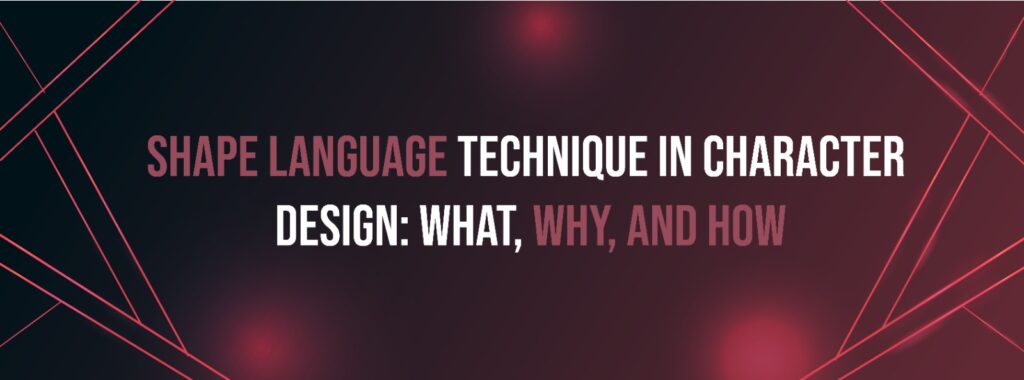
In 2025, character design continues to be at the core of storytelling in animation, gaming, branding, and digital illustration. But what truly makes a character visually striking and emotionally resonant? It often comes down to one crucial design principle: Shape Language in Character Design. This blog dives into the science and creativity behind using shape language effectively. From the Fundamentals of Shape Language to exploring Character Design Shape Psychology, we’ll guide you through the how, why, and what of using this technique to elevate your work. Whether you’re an aspiring artist or a professional designer, understanding the Impact of Shapes on Character Design is essential to creating compelling, memorable characters in 2025. What Is Shape Language in Character Design? Shape Language refers to the use of specific geometric shapes to communicate personality traits, emotions, or narrative roles within a character’s visual design. These shapes form the visual vocabulary of your character and help audiences instantly understand who they are before they say a word. The Three Core Shape Categories: When you look at famous animated characters, you’ll notice these shapes guide their forms. Think of Mickey Mouse (circles), Superman (squares), or Maleficent (triangles). Using Shape Language in Character Design gives your visuals intentionality. It helps create intuitive, readable designs that connect with audiences instantly. Why Shape Language Matters in 2025 As character design becomes more integrated into virtual reality, interactive content, and diverse cultural storytelling, subtle cues like shape become vital for accessibility and emotional resonance. Key Reasons to Use Shape Language: In the competitive and immersive digital landscape of 2025, the power of shape to deliver meaning faster than text or voice is unparalleled. Character Design Shape Psychology: What Shapes Represent Understanding Character Design Shape Psychology allows artists to make informed choices based on the message they want to convey. 🔵 Circles: 🟫 Squares: 🔺 Triangles: Knowing this helps you shape characters to fit the roles they’re meant to play. How to Use Shape Language in Art Applying Shape Language in Character Design isn’t just about drawing shapes—it’s about building a cohesive language across all parts of a character. Where to Apply Shape Language: Example Process: Fundamentals of Shape Language: The Design Building Blocks Let’s go deeper into the Fundamentals of Shape Language to help you build a stronger foundation in your design work. 1. Visual Simplicity Shapes should be clear and readable even at small sizes. This helps in branding, app icons, and animation readability. 2. Contrast for Character Dynamics Opposites attract! A triangle villain clashing with a circle hero can visually reinforce conflict. 3. Shape Combinations Characters can mix shapes to represent duality or development. A circle-head with a square body could suggest a kind soul with a strong foundation. 4. Scale and Proportion Exaggerate certain parts to amplify the character’s traits—like large round eyes for innocence or broad square shoulders for power. Mastering these principles allows you to craft characters that not only look great but feel intentional. Character Design Techniques and Tips for 2025 Here are fresh tips tailored for the current tools and trends of 2025: ✅ Use AI-Assisted Sketching AI tools like Adobe Firefly or Character.ai can generate shape-based character roughs. These help speed up exploration. ✅ Design for Multiple Platforms Make sure your character’s shape reads well in 3D, AR, and flat 2D assets. ✅ Create a Shape Language Chart Before designing, make a reference sheet with shape-based traits to align your team. ✅ Emphasize in Storyboards Use shape contrast in storyboards to highlight character dynamics visually. These modern Character Design Techniques and Tips will help keep your designs sharp and relevant. Best Shape Language Examples in Animation Nothing teaches better than observing the pros. Let’s look at Best Shape Language Examples in Animation that demonstrate mastery. 🔹 Pixar’s Inside Out Each emotion is designed with different shapes: Joy is a starburst of circles, Anger is a short square block, Fear is a tall, thin triangle. 🔹 DreamWorks’ Kung Fu Panda Po is entirely made of rounded forms, communicating his gentle, goofy nature. Tai Lung, the antagonist, features angular designs to show tension and danger. 🔹 Disney’s The Incredibles Mr. Incredible’s boxy design contrasts Elastigirl’s more flexible, rounded design—visually expressing their personalities and powers. 🔹 Arcane (Netflix) The show masterfully uses angular, gritty designs for villains and organic, smooth curves for protagonists—each matching character development. These examples reinforce how Using Shape Theory for Better Characters creates iconic storytelling. Using Shape Theory for Better Characters Shape theory isn’t a rigid rule—it’s a tool. Combining shapes allows you to show character growth, internal conflict, or duality. Multi-Shape Characters: Tips: This strategic combination strengthens psychological depth in design. Integrating Shape Language in Team Projects In large animation or game studios, consistency is key. Here’s how to apply shape language across teams: 📘 Create a Shape Style Guide Include base shape templates, psychological associations, and approved combinations. 🎨 Use Modular Asset Libraries Group costume parts, props, and face elements by shape category. 🤝 Collaborate with Animators Early Ensure movement complements the design—sharp shapes should move fast and aggressively, soft ones with bounce or sway. Collaboration enhances the Impact of Shapes on Character Design across the full pipeline. The Future of Shape Language in Character Design (2025 and Beyond) 🔮 Predictive Tools AI-driven design assistants that suggest shape combinations based on character briefs. 🔮 Responsive Design Characters that shift shape subtly based on emotional state—perfect for games and VR. 🔮 Cross-Cultural Shape Psychology As global content rises, designers explore how different cultures interpret shape symbolism. By staying ahead of these trends, your mastery of Shape Language in Character Design will remain timeless and future-ready. Final Thoughts In 2025, Shape Language in Character Design remains one of the most impactful tools in any visual storyteller’s toolkit. It’s not just about what looks cool—it’s about what communicates clearly, emotionally, and universally. Understanding Character Design Shape Psychology enables you to speak to your audience before a single word is spoken. Whether through soft circles, grounded squares, or edgy triangles,




